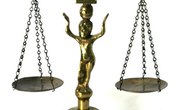Fourth-tier law schools are so named because of their place at the bottom of the annual "U.S. News and World Report" law school rankings, though the magazine does not officially rank schools in "tiers." Some fourth-tier schools can provide a low-cost avenue to a legal career for students with limited means. They are often parts of state university systems, or may have a specific faith-based mission.
Definitions
Fourth-tier law schools get their name from the "U.S. News and World Report" annual law school rankings. The magazine does not place schools in specific "tiers"; instead it ranks the first 150 schools numerically and lists the final 40 to 50 schools alphabetically.
"U.S. News" only ranks law schools accredited by the American Bar Association (ABA), but unaccredited law schools are commonly considered "fourth-tier" schools as well. Despite their low ranking, these fourth-tier schools are highly represented on the magazine's "Most Popular Law Schools List," making up almost half of the 2010 entries.
In the "U.S. News" rankings, therefore, schools are only unofficially considered as belonging to the following "tiers":
Rankings 1-50: First Tier (often the first 14 schools are considered a separate tier called the Top 14 or T14);
Rankings 51-100: Second Tier;
Rankings 101-150: Third Tier;
Rankings 150+: Fourth Tier (not numerically ranked).
Examples
A large number of less-prominent state schools have fourth-tier law schools, such as North Carolina's Appalachian State University. Some fourth-tier law schools have special faith-based missions that may appeal to certain applicants. This includes the Regent University School of Law, founded by televangelist Pat Robertson; and Ave Maria School of Law, which incorporates Catholic teachings into its curriculum. Some schools, such as the Northern Kentucky School of Law, have a part-time focus to accommodate working students.
Costs
Fourth-tier law schools can sometimes be as expensive as schools in higher tiers. For example, Suffolk University's tuition for the 2010-2011 year is $41,100, only slightly less than Harvard's price tag of $45,450. However, because of the number of state schools with low in-state tuition, some fourth-tier schools can be a good choice for students with limited incomes. Florida A&M Law School, for example, charged $10,312 for the 2010-2011 year for Florida residents, while the law schools of the University of Michigan and the University of Virginia, both top-ranked state schools, charged over $40,000 for in-state students.
Job Prospects
Job prospects for graduates of fourth-tier law schools can be significantly lower than those in upper-tier schools. For example, more than 96% of 2009 graduates of the University of Pennsylvania Law School were employed upon graduation, with a median private-sector salary of $160,000. By contrast, only 53.9% of 2009 Texas Wesleyan University Law School graduates had secured employment at graduation, and their median salary in the private sector was $64,500. Still, graduates have successfully found full and satisfying careers as attorneys following their education at fourth-tier law schools.
Related Articles
Writer Bio
Chris Burke began writing professionally in 2007. In addition to writing for student-run literary journals in college, he has authored content for The George Washington University, as well as the Association of American Colleges and Universities. Burke holds a Bachelor of Arts in international affairs and is pursuing a law degree from Columbia University.











